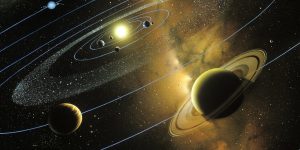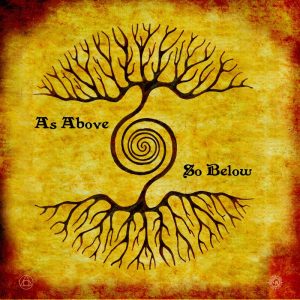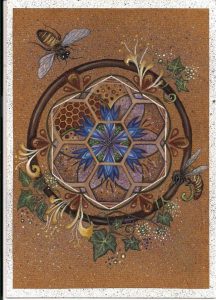With this question on my mind, I began my journey into a topic that has – and will continue – to open up greater vistas of insight than I have previously imagined. Many definitions have I heard thus far of “biodynamics”. Though it is an approach to working with the natural world that many people have long adhered to, the concepts within the discipline of biodynamics are still shrouded in mystery for most.
If we break down these two words, we may begin to get a sense of what they refer to: bio – life; dynamic – a system stimulated by change and transformation of different elements; and of course, bee-keeping, which we know to refer to the act of tending bees in a domestic way.
So, here we have a system that stimulates the life-force through elemental transformation with which to approach beekeeping. This sounds like a beautiful system indeed, but what does this really mean? Well, let’s start at the beginning…
In the beginning, there was nothing. There was such supreme and endless nothingness that our idea of nothing cannot even approach the true concept of this original nothingness. But within this abyss of abysses, there was a seed. And, somehow, this seed managed to turn absolute nothing-ness into absolute everything-ness. Within the blinding flash and ecstatic explosion we now refer to as The Big Bang, the Universe was born.
Over the millennia – over the trillions of millennia – matter slowly, slowly formed into nebulas and stars and galaxies. One of these galaxies houses our own solar system: a medium-sized yellow star, orbited by nine planets and many moons.
 1
1
Now, contrary to what some readers might be thinking at this point, I do not digress by telling the origin story of space. What I am getting at is that, in my studies of biodynamics, I have learned something foundational about this very special science, which links the birth of the universe to plants, to people, and to bees.
In the Universe, there are worlds within worlds within worlds; they mirror each other, from the tiniest snail shell to the most immense spiral galaxy. The forces that tie all these intricate webs together are bound by vibrations, by radio frequencies manifested as light and radiation, by the humming note brought forth at the moment of creation. All the celestial bodies, all the dust and space rocks, as well as our own organic bodies, are affected by these cosmic vibrations; all our lives are dictated by the great force of gravity and by these vibratory impulses. Knowing this, does it seem so strange that, if something as massive as a star is prey to these forces, then bodies as tiny as ours – and even tinier still, as bees – would not also be greatly affected by the buzzing of the creative force of celestial motions?
 2
2
This is the basis for biodynamics. The dynamism comes from working with and within the spirits of these celestial forces. Each star and each planet has its own particular configuration of elements, exemplified within its particular orbit, giving each their own personality. Some are distant, cold, and mysterious; some are arid and fiery; some are closer to the Sun and move faster; some revolve on erratic orbits. All these distinctions, and more, exert different forces into our solar system – on the Earth as well as on each other. We are a great family, tied together by the bloodline of gravity.
So when we earthlings approach agriculture, or beekeeping, or myriad other terrestrial endeavors in our lives, we will find great depths of intuition, awareness, and fulfillment if we align ourselves with the influences of our planetary neighbors.
Bees are sensitive; they have not forgotten – as most humans have – how to hear the voices of the cosmos, how to feel the waves of particular energies swirling through the galaxy. The biodynamic approach to working with bees recognizes the affects of the planets on our earthly plane and surrenders to the cosmic moods, effectively forming a dynamic relationship between bee, human, planet, and solar system.
Right now I am reading a book called The Wisdom of the Bees by Erik Berrevoets. Within its pages, Berrevoets reiterates many of Rudolf Steiner’s theories about beekeeping, hoping to spread the word to modern audiences of, not only the importance of beekeeping in order for life to continue on this planet, but also of the immensely spiritual nature of the bees themselves. There are many kernels of wisdom that the bees have to share with us, though one that seems especially pertinent at this time speaks of unity, of wholeness. The bees are expressing – through the very way they live their lives – this sense of spinning our lives together with the lives of celestial forces – through sensitivity, through protecting and accepting patterns, and, ultimately, through always working toward a unification that is not static, but that is always transforming within the cycles of life, death, and transformation.
 3
3
Photo Credit:
- http://www.huffingtonpost.com
- http://www.cafepress.com
- https://www.suggest-keywords.com
Leave a Reply